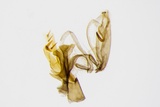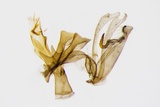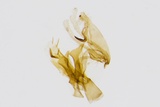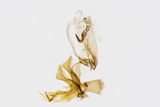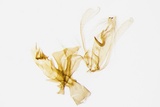Aproaerema taeniolella (Zeller, 1839) Species
Last modified: Feb. 26, 2024, 4:49 p.m.
A very rare species in Belgium.
Details
- Classification
- Family: Gelechiidae > Subfamily: Anacampsinae > Tribus: Anacampsini > Genus: Aproaerema > Species: Aproaerema taeniolella
- Vernacular names
- Brede bandpalpmot (NL), Common White-barred, Silver-barred Sober (EN)
- First mention in Belgium
- De Crombrugghe G. 1906a. Catalogue raisonné des Microlépidoptères de Belgique. — Mémoires de la Société entomologique de Belgique XIII: 1–172; XIV: 1–155. On page 32.
- Status
-
Native
Distribution
Imago
Wingspan 11–14 mm. S. taeniolella can be distinguished from other Syncopacma species by the bright band that is clearly visible on the underside of the wing and a white costal spot on the hindwing underside. These features are absent in other species.
Museum specimens
No pictures yet!Specimens in nature
No pictures yet!Genitalia
The male genitalia are characterised by the shape of the juxta, having strong hooks basally and spatulate flanges posteriorly and four strong thorns in the apical part of the phallus.
The female genitalia are characterised by the very large sack-shaped membranous antrum and the bridge-shaped sterigma.
Caterpillar
Rather similar to Aproaerema larseniella. Head yellowish brown; prothoracic plate ochreous with a medial and a pair of lateral black spots; abdomen brownish green, becoming red when mature; anal plate blackish brown; small black pinula (Gregersen & Karsholt 2022).
Bionomics
The larva feeds between spun shoots or leaves on the host plant.
The adults are active before sunset and later come to light.
Flight periods
The adults fly in one generation a year from late May towards late August.
Observed on
- Host plant (species):
- Lotus corniculatus
The larva lives mainly on mainly Lotus corniculatus. Very occasionally on Trifolium, Medicago and Lotus pedunculatus. Also once reported from Helianthemum nummularium.
Habitat
It occurs in meadows and bogs, but also on calcareous slopes.
